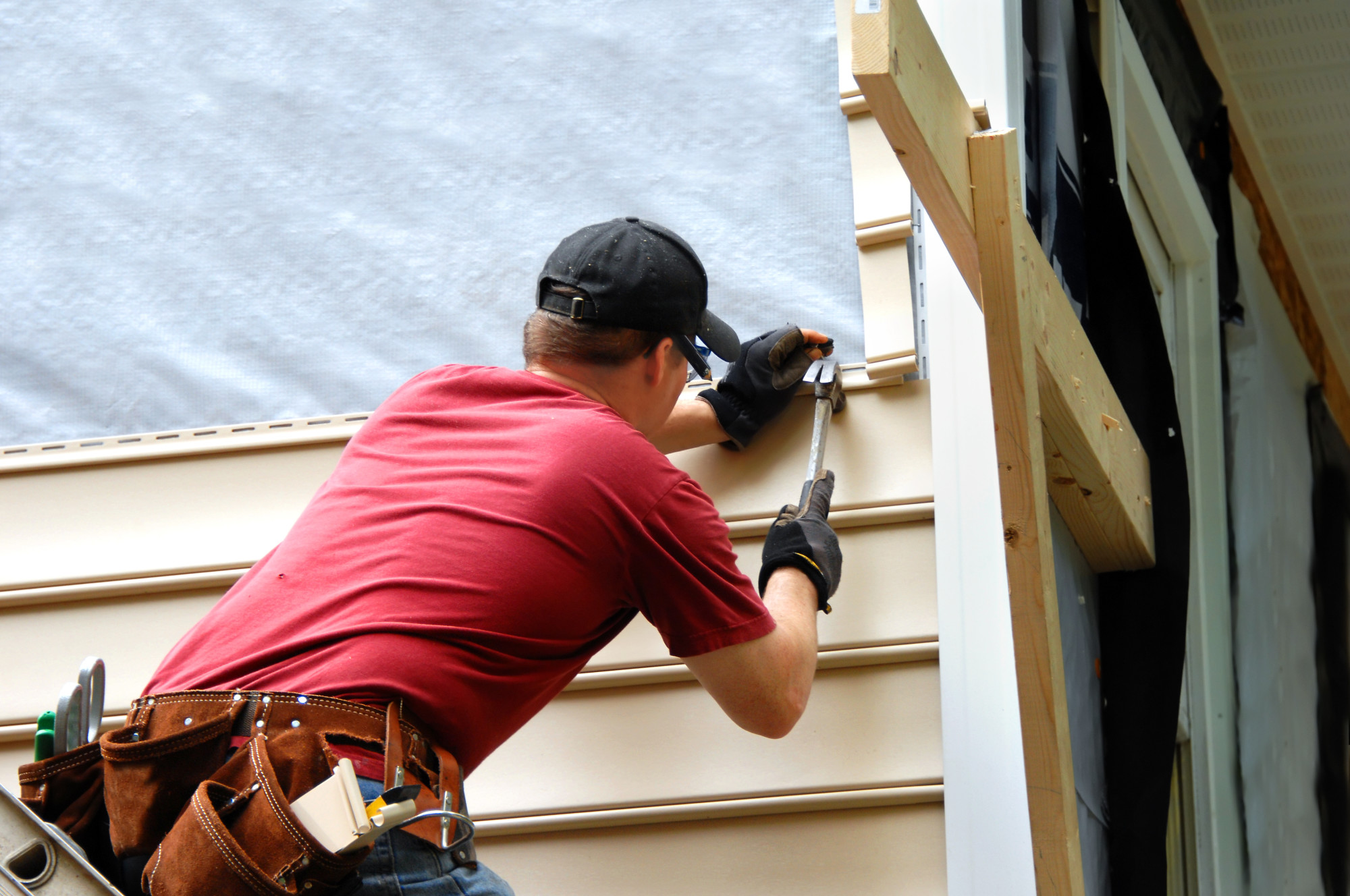
Navigating Siding Installation: What to Expect
Installing new siding on your home can be a significant but rewarding investment. It not only enhances your home’s aesthetic appeal but also plays a crucial role in its protection and energy efficiency. For many homeowners, however, the process can seem daunting. This comprehensive guide will walk you through the siding installation process, what you should prepare for, and tips on choosing a reliable contractor.
Understanding the Siding Installation Process
The process of siding installation involves several key steps, each critical to ensuring a successful outcome.
Initial Consultation and Quote
Embarking on a siding installation project begins with an initial consultation and obtaining a quote. This initial phase is critical as it sets the expectations and groundwork for the entire project. Here’s what you should know about this process.
Understanding the Initial Consultation
In-Depth Assessment
The initial consultation involves a comprehensive assessment of your home by the siding contractor. They will examine the current state of your home’s exterior, noting dimensions, the condition of existing siding (if applicable), and any unique structural features or potential challenges.
Discussing Your Preferences and Needs
This stage is also your opportunity to discuss your preferences for siding materials, colors, and styles. The contractor can provide samples, show previous work, and give professional advice on what materials and designs might best suit your home and climate.
Addressing Technical Aspects
Expect the contractor to discuss technical aspects such as insulation options, weatherproofing, and any necessary repairs to the underlying structure that might be needed before new siding is installed.
Getting a Detailed Quote
Itemized Costs
A detailed quote should be provided after the initial consultation. This quote typically includes a breakdown of the costs for materials, labor, any additional features like insulation, and potential costs for repairs or preparation work.
Transparency is Key
Reliable contractors will be transparent about their pricing. The quote should be clear and comprehensive, with no hidden fees.
Comparing Quotes
It’s advisable to obtain quotes from multiple contractors for comparison. This not only gives you a sense of the market rate but also offers insights into different approaches contractors may take for your project.

Understanding Fair Pricing
Market Research
To understand what constitutes a fair price, some market research is beneficial. Prices can vary significantly depending on the region, the material chosen, and the complexity of the installation.
Quality vs. Cost
Cheaper doesn’t always mean better. When evaluating quotes, consider the quality of the materials, the reputation of the contractor, and the scope of services included. Sometimes, paying a bit more upfront can save money in the long run due to better quality workmanship and materials.
Factor in Long-Term Value
Consider the long-term value of the siding material. Some materials, though more expensive, may offer better durability, lower maintenance costs, and greater energy efficiency.
The initial consultation and quote process is a foundational step in your siding installation project. It’s an opportunity to assess your needs, understand your options, and establish a clear, transparent, and fair pricing structure with your chosen contractor. Taking the time to thoroughly engage in this process will ensure that you embark on your siding project with clear expectations and a solid plan in place.

Preparing Your Home
Once you have decided to proceed with siding installation and have chosen a contractor, the next crucial phase is preparing your home for the installation process. Proper preparation ensures that the project runs smoothly and helps prevent any potential issues. Let’s discuss what this entails.
Clearing the Exterior Area
Ensuring Accessibility
Your contractor will need clear access to your home’s exterior walls. This means removing or relocating any obstacles that might hinder access, such as outdoor furniture, potted plants, garden tools, and decorative items.
Protecting Landscaping
While contractors will take care not to damage your landscaping, it’s a good idea to cover any plants or garden beds near your home with tarps to protect them from debris.
Preparing the Interior
Securing Loose Items
The installation process can cause vibrations that might affect the interior of your home. Secure or remove any hanging pictures, mirrors, and other wall-mounted items, especially in areas directly adjacent to the exterior walls.
Protecting Valuables
If you have any valuable items near the walls being worked on, it’s prudent to move them to a safe location. This includes both breakable items and sensitive electronics.
Planning for Noise and Minor Disruptions
Expect Some Noise
Siding installation can be noisy, so plan accordingly, especially if you have young children, pets, or work from home. It might be a good idea to arrange for pets to stay somewhere else during the day to reduce their stress.
Schedule Adjustments
Depending on the scale of the project, you might need to adjust your daily schedule. This could involve parking your car in a different location or adjusting your routine to accommodate the work being done.
Communication with Your Contractor
Discussing Details
Before the project begins, have a detailed discussion with your contractor about what the preparation process entails. They might have specific requirements or suggestions based on their work plan.
Establishing a Work Schedule
Knowing the work schedule is important. This includes start and end times each day, as well as the projected duration of the project. It helps you plan your activities and provides a timeframe for when your home will be back to normal.

Safety Considerations
Ensuring a Safe Environment
Make sure that the work area is safe for both the workers and your family. Keep children and pets away from the area during work hours.
Access to Utilities
Your contractor may need access to electrical outlets or other utilities. Ensure these are available and let the contractor know where they can be found.
Preparing your home for siding installation is a critical step in ensuring that the project proceeds efficiently and safely. By taking the time to clear the work area, protect your interiors, and communicate effectively with your contractor, you can help guarantee a smooth installation process with minimal disruption to your daily life.
The Installation Process
Professional siding installation is a meticulous process that transforms the exterior of your home. Understanding this process can provide homeowners with valuable insights into what to expect and how to ensure the best results. Here’s a detailed look at the key stages of professional siding installation.
- Removing Old Siding: If you have existing siding, it will need to be carefully removed. This stage requires precision to avoid damage to the underlying structure.
- Inspection and Repairs: With the old siding off, your contractor should inspect the sheathing for any damage or areas that need repair.
- Installing New Siding: The new siding is then installed. The time this takes will vary depending on the size of your home and the type of siding.
- Cleanup: A reputable contractor will handle the cleanup, disposing of the old siding and any installation debris.
Removing Old Siding (If Applicable)
Assessment of Existing Siding
The first step in the installation process often involves the removal of old siding. Professionals will carefully assess the current siding to determine the best approach for removal, ensuring minimal damage to the underlying structure.
Safe and Efficient Removal
Using specialized tools and techniques, the old siding is removed efficiently. This phase requires expertise to handle various siding materials and to navigate any challenges posed by the home’s architecture.
Inspecting and Repairing the Underlying Structure
Examination of Wall Sheathing
With the old siding removed, a thorough inspection of the wall sheathing is conducted. This step is crucial to identify any hidden damage like rot, mold, or structural weaknesses.
Necessary Repairs
Any issues discovered during the inspection are addressed promptly. This may involve replacing damaged sheathing, reinforcing structural elements, or treating areas affected by mold.

Preparing the Surface for New Siding
Ensuring a Clean and Level Surface
A key to successful siding installation is a clean, flat, and solid surface. Professionals ensure that the exterior walls are prepared adequately to receive the new siding.
Installing Weather-Resistant Barriers
A weather-resistant barrier is installed over the sheathing. This barrier is essential for protecting the home from moisture and air infiltration, contributing to both the longevity of the siding and the energy efficiency of the home.
Installing the New Siding
Precise Measurements and Cutting
New siding panels are measured and cut precisely to fit each section of the home’s exterior. This stage requires skill and accuracy to ensure a seamless and aesthetically pleasing result.
Systematic Installation
Starting from the bottom, siding panels are systematically installed, ensuring proper alignment and secure fastening. Special attention is given to areas around windows, doors, and corners to ensure a perfect fit.
Quality Checks
Throughout the installation, quality checks are performed to ensure that each panel is installed correctly, and that the siding functions effectively in terms of ventilation and insulation.
Finishing Touches
Trimming and Detail Work
Once the main panels are installed, trim work begins. This includes installing trim around doors, windows, and corners, which not only enhances the appearance but also plays a crucial role in sealing and protecting the home.
Final Inspection
A final inspection is conducted to ensure that every aspect of the siding installation meets the highest standards of quality and craftsmanship.
Professional siding installation is a detailed and systematic process that rejuvenates the exterior of a home. It requires skill, precision, and an understanding of the unique challenges each home presents. By entrusting this job to professionals, homeowners can ensure that their siding is not only visually appealing but also provides lasting protection and efficiency for their home.
Final Inspection
- Walkthrough: Once the siding is installed, you should do a walkthrough with the contractor to ensure the work meets your expectations and to address any concerns.

Preparing for Siding Installation
As a homeowner, there are several things you can do to prepare for the installation process:
- Research Siding Options: Understand the different types of siding materials and their benefits.
- Set a Budget: Have a clear budget in mind, but be prepared for unforeseen expenses.
- Prepare Your Property: Clear the work area around your house and make arrangements to protect your interior from dust and vibrations.
- Plan for Disruptions: Depending on the scale of the project, be prepared for some level of noise and disruption.
Finding a Reliable Siding Contractor: What to Look For and How to Choose
Choosing the right contractor for your siding project is just as important as selecting the right siding material. A reliable contractor ensures that the installation is done professionally, efficiently, and to your satisfaction. Here’s how to find a trustworthy siding contractor and what to consider during your search.
Research and Referrals
Start with Research
Begin by researching local siding contractors. Online resources, reviews, and testimonials can provide a wealth of information. Look for contractors with good ratings and positive feedback from previous clients.
Ask for Referrals
Word-of-mouth referrals are invaluable. Ask friends, family, or neighbors who have recently had siding work done for recommendations. They can provide honest insights into their experience with a particular contractor.
Evaluating Credentials and Experience
Check for Licensing and Insurance
Ensure that any contractor you consider is licensed to perform siding installations in your area and carries the necessary insurance. This protects you from liability and ensures that the contractor adheres to industry standards.
Assess Experience and Expertise
Experience is crucial in siding installation. Look for a contractor with a solid track record and expertise in installing the type of siding you’ve chosen for your home.
Getting Quotes and Comparing Prices
Request Detailed Quotes
Contact several contractors to get quotes for your project. Ensure these quotes are detailed, covering all aspects of the job, including materials, labor, and any additional costs.
Compare and Contrast
Compare the quotes you receive. Be wary of quotes that are significantly lower than others, as this might indicate a compromise in quality or hidden costs.
Reviewing Past Work and References
Ask for a Portfolio
A reputable contractor should be able to provide a portfolio of their past work. This gives you an opportunity to assess their craftsmanship and the quality of their work.
Contact References
Speaking to past clients can provide insights into the contractor’s reliability, communication, adherence to timelines, and overall quality of work.

Making the Final Decision
Trust Your Instincts
After meeting with contractors, trust your instincts. Choose someone who communicates well, understands your vision, and whom you feel comfortable working with.
Consider the Value, Not Just Cost
Remember, the cheapest option isn’t always the best. Consider the value offered by the contractor in terms of quality materials, workmanship, and warranty.
Finding the right siding contractor is crucial for a successful siding installation. Take your time, do your research, and choose a contractor who offers the right balance of quality, reliability, and cost.
Selecting the right contractor is perhaps the most crucial step in the siding installation process, so, remember:
- Check Credentials: Ensure the contractor is licensed, insured, and has good standing in the industry.
- Read Reviews and Ask for References: Look at online reviews and ask for references from past clients.
- Experience with Your Chosen Siding: Confirm that they have experience installing the type of siding you’ve chosen.
- Get Multiple Quotes: It’s always wise to get quotes from several contractors to compare prices and services.
- Ask Questions: Don’t hesitate to ask potential contractors about their process, timeline, and how they handle unexpected issues.
Siding installation is a significant undertaking that can dramatically improve your home’s appearance and functionality. By understanding the process, preparing your home and yourself, and choosing the right contractor, you can ensure a smooth and successful siding installation.
Remember, this is an investment in your home’s future, so taking the time to do it right is crucial. With careful planning and a professional approach, your new siding will serve you well for years to come.
If you’re considering new siding for your home and looking for reliable local contractor quotes, How Much Does Siding Cost is here to assist. Our team of experienced professionals is committed to providing high-quality siding solutions tailored to your needs. We pride ourselves on transparent pricing, exceptional craftsmanship, and customer satisfaction.
